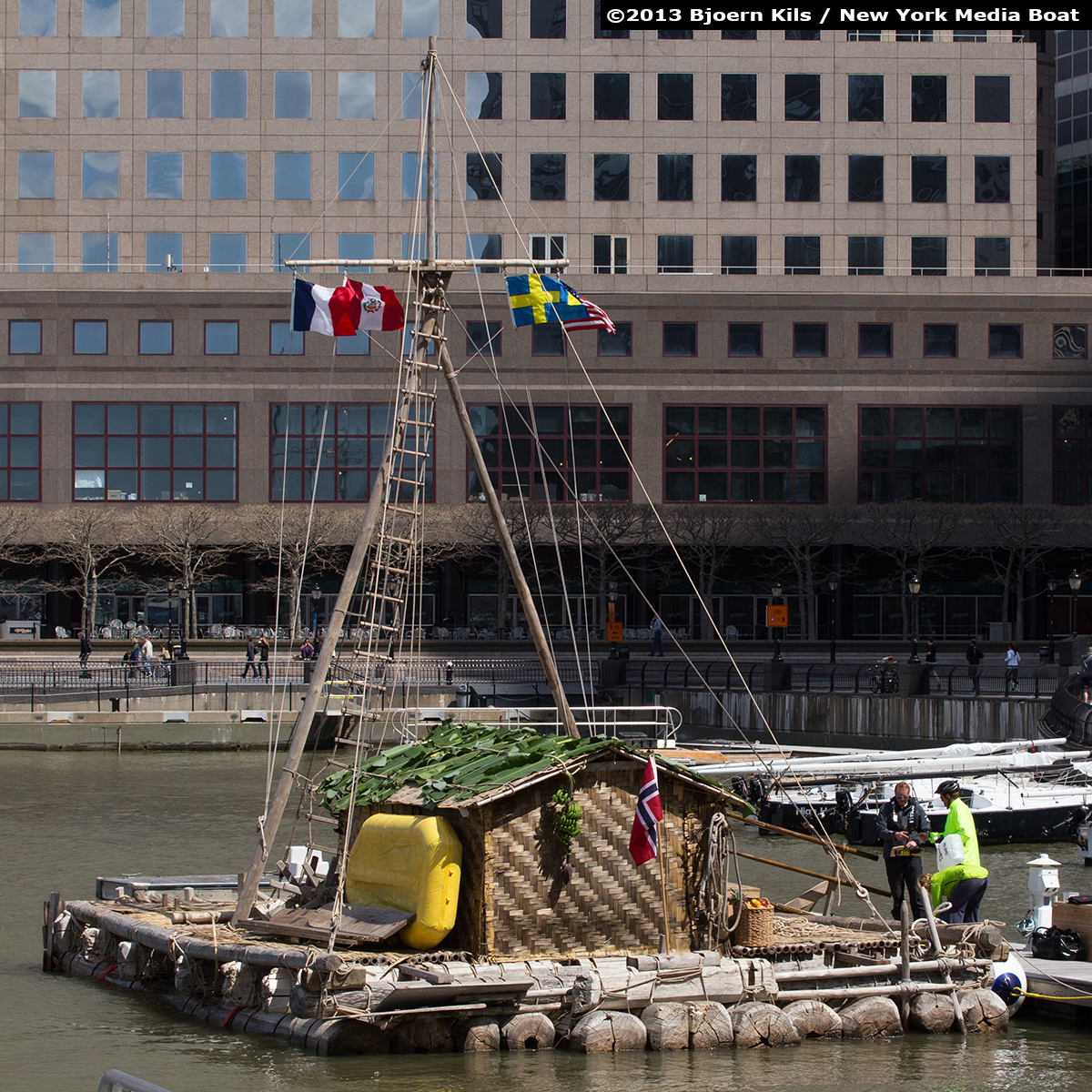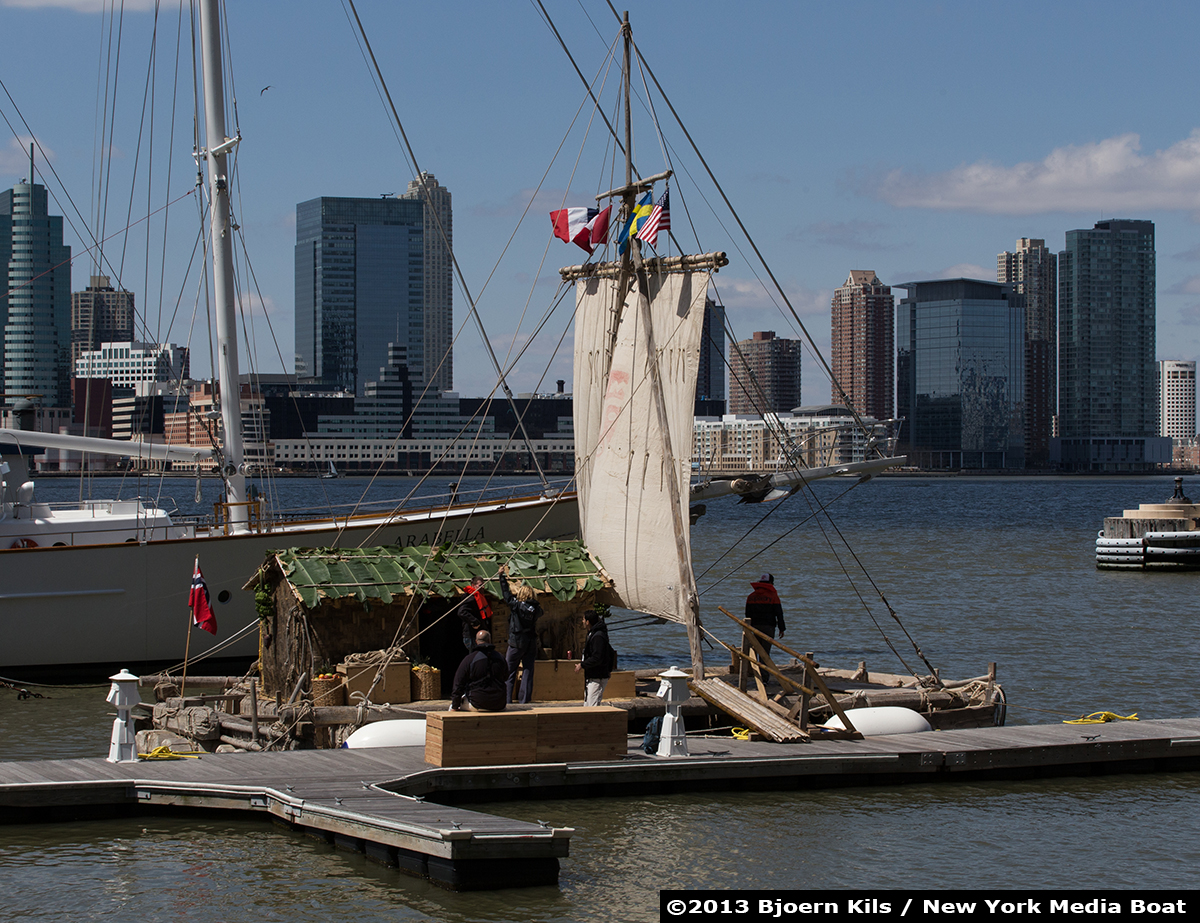A few days ago we showed you one of the world’s most decked-out private yachts —the $1.5 billion Eclipse.
Today, on the other side of the spectrum but just a few miles south on the Hudson, floats the world’s most primitive seagoing raft — the Tangaroa.
From a distance, it appears to be Thor Heyerdahl’s Kon-Tiki built by the Norwegian explorer to show that people from South America could have settled Polynesia from the east, contrary to popular belief. They constructed Kon-Tiki from balsa wood and hemp rope — the same materials available before Columbus’ time. Heyerdahl and his crew navigated by the stars and ocean currents, and put down some respectable 4,300 nautical miles before wrecking Kon-Tiki on a reef in theTuamotu Islands after 101 days at sea. Heyerdahl’s 1947 expedition across the Pacific was a huge success: it made him Norway’s most famous person, his book became an international best seller, and their documentary won an Academy Award in 1951.
The raft currently docked at North Cove Marina is a replica and did not sail from Norway to New York, but was delivered by container ship instead. It’s here as a promotional stunt to highlight the newly released 2012 action movie ‘Kon-Tiki,’ nominated for a 2013 ‘Best Foreign Language Film’ Oscar.
Tangaroa however was not built to promote the movie, but rather float the Humbold Current as well. In 2006 a Norwegian team led by Olav Heyerdahl, grandson of Thor Heyerdahl, constructed the replica-raft in an attempt to duplicate the original Kon-Tikivoyage. They too crossed the Pacific, made landfall in the Polynesian Islands, anddocumented their voyage.
If you want to climb aboard Tangaroa, swing by North Cove Marina in Battery Park City. I’m told the raft is open to the public and will be there until April 22nd.
The movie opens in select U.S. theaters on April 26 so check out the trailer, and if you’re ever in Oslo, I highly recommend a visit to the Kon-Tiki Museum at Bygdøy.











